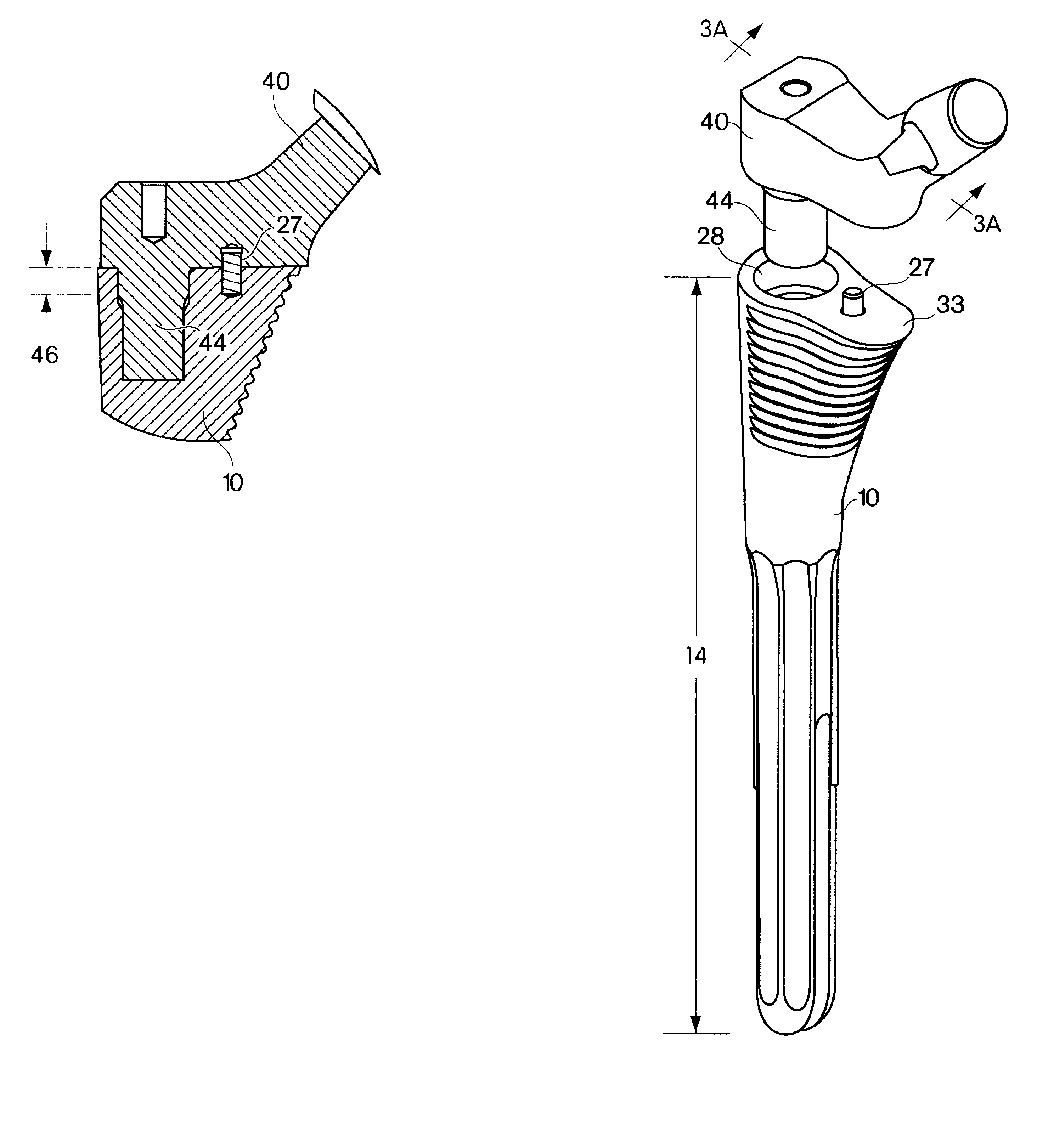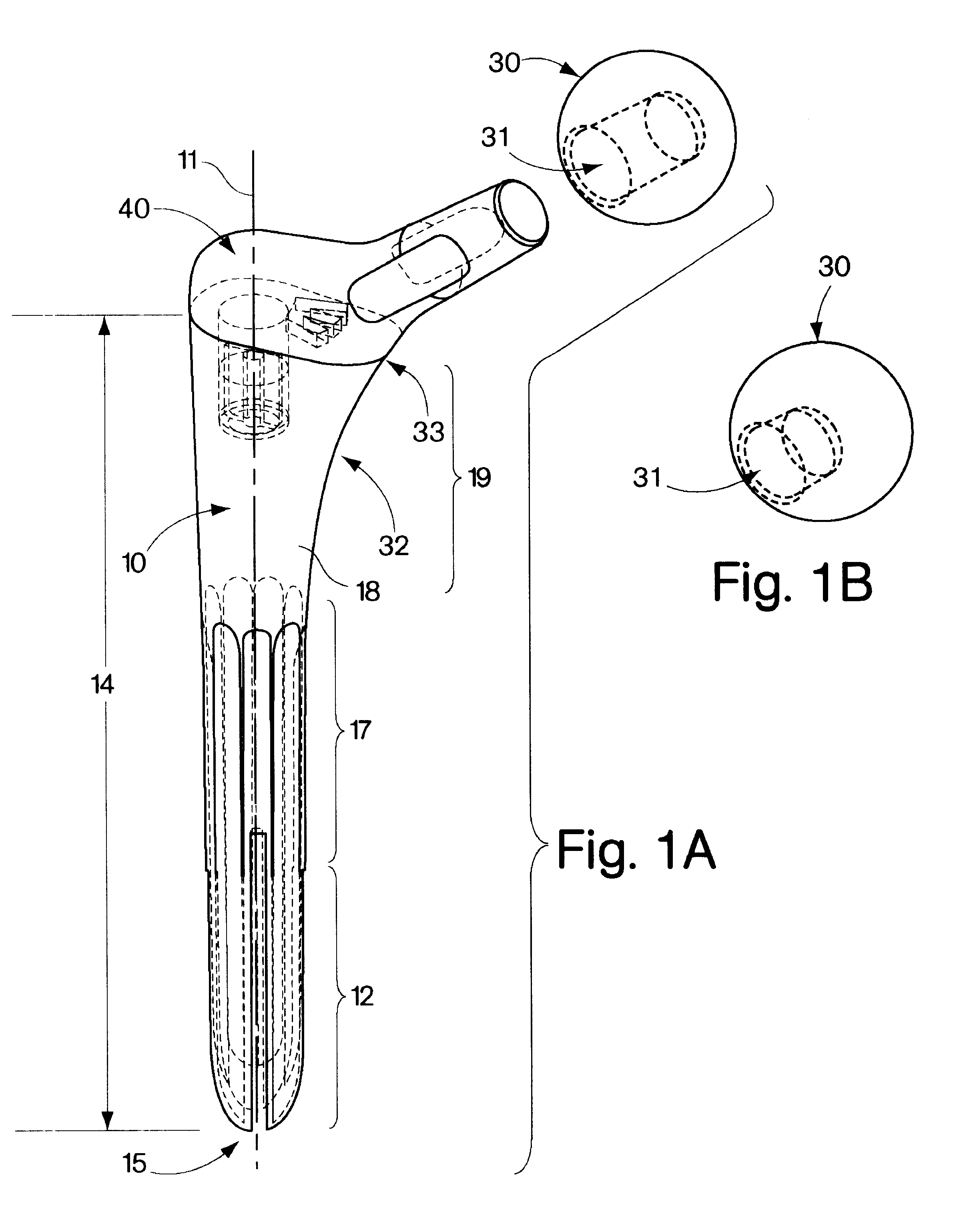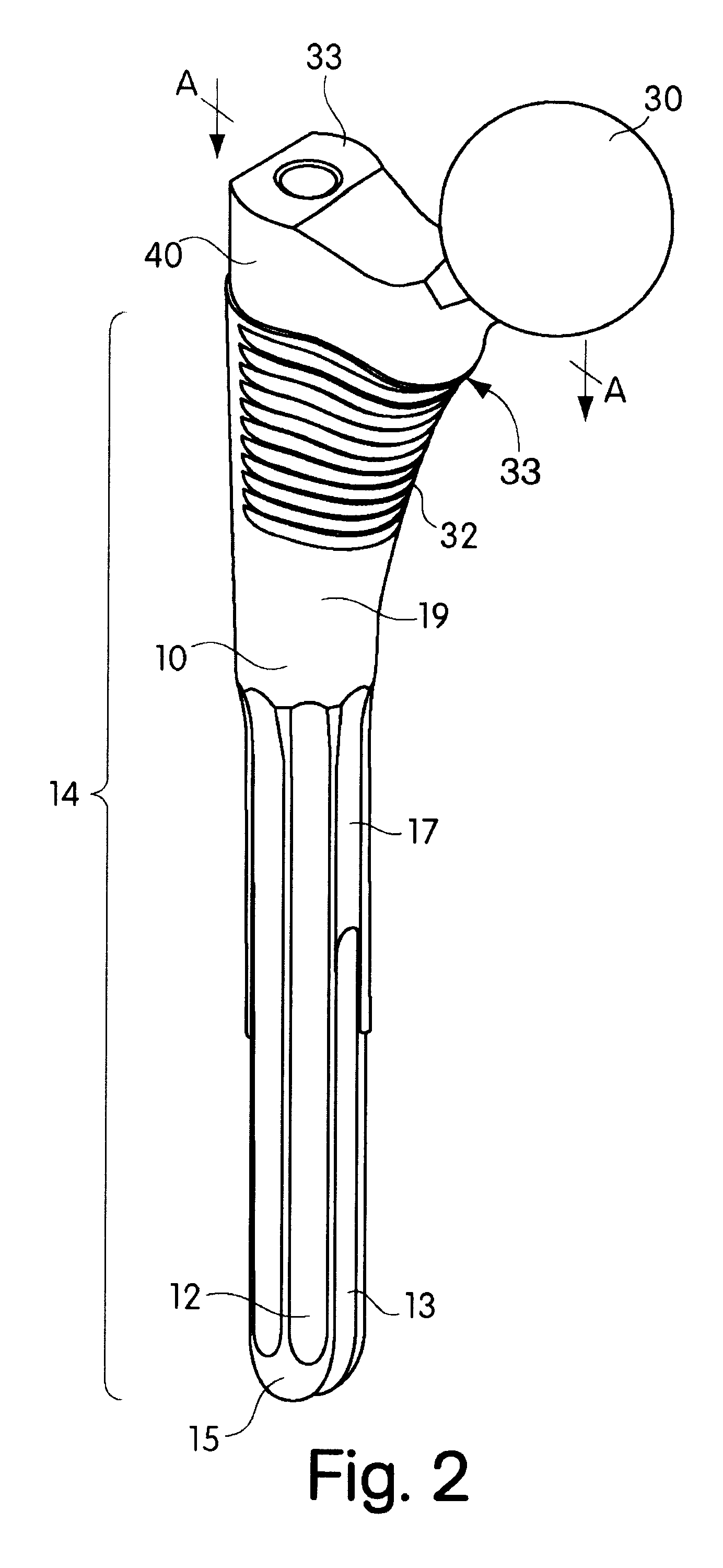Joint prostheses and components thereof
a joint replacement and joint technology, applied in the field of joint replacement systems, kits and methods, can solve the problems of mechanical properties and adhesive properties of bone cement degrade, adversely affecting the goal of satisfactorily restoring clinical bio-mechanics, and affecting the ability to perform joint replacemen
- Summary
- Abstract
- Description
- Claims
- Application Information
AI Technical Summary
Benefits of technology
Problems solved by technology
Method used
Image
Examples
Embodiment Construction
[0046]The present invention is suitable for replacement of any joint comprising a bone shaft, a joint head bearing articular cartilage and in anatomic continuity with the bone shaft, and a joint socket bearing articular cartilage that receives the joint head and permits motion of the joint head and the bone shaft relative to the joint socket. Examples of joints where a single rounded joint head may be found articulating with a cupped joint socket include the hip, the glenoid, the metacarpophalangeal joints and the metatarsophalangeal joints. The present invention is well adapted for prosthetic replacement of these joints. The systems, kits and methods of the present invention may also be adapted for use in joints wherein the joint head comprises two condyles, as in the knee or the interphalangeal joints, or in joints such as the radial elbow joint where a single humeral condyle acts as a joint head articulating with a joint socket on the radial head. In providing a prosthesis accord...
PUM
 Login to View More
Login to View More Abstract
Description
Claims
Application Information
 Login to View More
Login to View More - R&D
- Intellectual Property
- Life Sciences
- Materials
- Tech Scout
- Unparalleled Data Quality
- Higher Quality Content
- 60% Fewer Hallucinations
Browse by: Latest US Patents, China's latest patents, Technical Efficacy Thesaurus, Application Domain, Technology Topic, Popular Technical Reports.
© 2025 PatSnap. All rights reserved.Legal|Privacy policy|Modern Slavery Act Transparency Statement|Sitemap|About US| Contact US: help@patsnap.com



